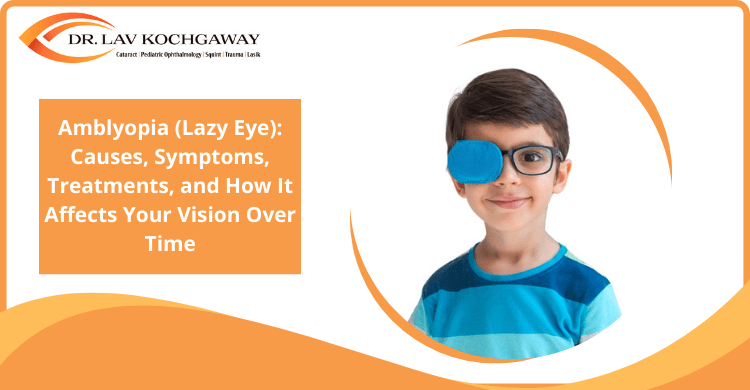
Amblyopia, commonly known as “lazy eye,” is a vision development disorder where an eye fails to achieve normal visual acuity, typically emerging during early childhood. Globally, amblyopia affects approximately 1.36% of children. Early detection and intervention are crucial, as treatments are more effective when initiated during the critical period of visual development. This article explores the causes, symptoms, and available treatment options for amblyopia, emphasizing the importance of timely management to prevent long-term vision impairment.
Amblyopia is a visual impairment in one eye that occurs because the brain and the affected eye do not work together properly. The eye itself appears normal, but the brain favors the other eye, which leads to the underdevelopment of the vision in the weaker eye. Unlike other vision problems such as refractive errors or strabismus (crossed eyes), amblyopia is a neurological issue that stems from how the brain processes visual information.
This condition is most common in children and often develops before the age of 7. If left untreated, amblyopia can result in permanent vision loss in the affected eye, as the brain may eventually ignore the visual input from the weaker eye entirely.
Several factors can contribute to the development of amblyopia, including:
Symptoms of Amblyopia
The symptoms of amblyopia can vary, but some common signs include:
There are several treatments available for amblyopia, especially when caught early. Treatment aims to strengthen the weaker eye and help the brain process visual input from both eyes effectively. Below are common approaches:
Early detection and treatment of amblyopia are crucial for the best outcomes. If left untreated, the brain may permanently ignore the weaker eye, resulting in irreversible vision loss. For this reason, it is recommended that children undergo regular eye exams starting as early as age 3.
Amblyopia treatment is most effective when it is started during the early years of childhood, as the brain is still in the process of developing its visual pathways. However, treatment can also be effective in older children and even adults, although it may require more time and effort.
Without treatment, amblyopia can lead to long-term vision problems, such as difficulty seeing out of one eye, reduced depth perception, and overall reduced quality of life.
It’s essential to consult an eye care professional if you notice any symptoms of amblyopia, particularly if your child exhibits signs such as squinting, difficulty reading, or a noticeable misalignment of the eyes. Regular eye exams are vital for detecting amblyopia early, especially in children who may not be able to express visual difficulties themselves.
Amblyopia, or lazy eye, is a condition that can affect vision development and cause long-term problems if left untreated. By understanding the causes and symptoms of amblyopia, as well as the available treatments, you can help ensure better outcomes for your child or loved one. Early intervention is key to preventing permanent vision impairment, so make sure to schedule regular eye exams and seek treatment if necessary. If you suspect your child has amblyopia, it’s time to schedule an eye exam with a trusted eye doctor. Early treatment can make all the difference in preserving healthy vision for years to come.
Schedule an appointment with Dr. Lav Kochgaway to ensure your child’s vision is developing properly. Early detection and treatment of amblyopia can lead to better vision and overall eye health in the future.